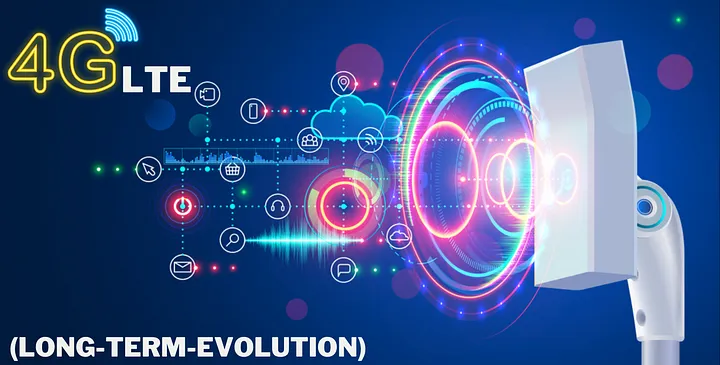In the ever-evolving landscape of healthcare, where patient safety and operational efficiency are paramount, the need for reliable asset tracking solutions has become increasingly vital. Asset Tracking in Healthcare is a multifaceted discipline that aims to streamline and optimize the management of critical medical equipment, devices, and supplies within healthcare facilities. This series of articles will guide you through the intricacies of this field, providing valuable insights and knowledge from the fundamentals to advanced concepts.
Let’s embark on this journey of discovery by addressing some fundamental questions:
- What is Asset Tracking in Healthcare?
Asset Tracking in Healthcare refers to the systematic process of monitoring and managing medical assets throughout their lifecycle, from procurement to disposal. It involves leveraging technology, such as Internet of Things (IoT) devices, to track and locate assets in real time, ensuring their availability, proper utilization, and maintenance.
- How does it apply to local LTE?
Local LTE, or private LTE networks, play a crucial role in Asset Tracking in Healthcare. These dedicated wireless networks provide reliable and secure connectivity, enabling seamless communication between asset tracking devices, backend systems, and healthcare professionals. They offer the necessary bandwidth, low latency, and coverage required for real-time asset monitoring and management.
- What are the roles of local LTE in Asset Tracking in Healthcare?
Local LTE networks fulfill several essential roles in Asset Tracking in Healthcare. They facilitate accurate asset location tracking, enabling healthcare staff to quickly locate and retrieve equipment when needed, reducing search time and improving operational efficiency. Additionally, local LTE networks support data transmission, enabling real-time asset status updates, maintenance alerts, and automated inventory management.
- What are the use cases of Asset Tracking in Healthcare?
Asset Tracking in Healthcare has a wide range of applications across various healthcare settings. It aids in the tracking of mobile medical equipment, such as infusion pumps, ventilators, and portable diagnostic devices, ensuring their availability when and where they are needed. It also helps in managing high-value assets, such as imaging equipment and surgical instruments, optimizing their utilization and preventing loss or theft.
- What is the mechanism of asset tracking, and why is it required?
Asset tracking mechanisms involve the deployment of IoT devices, such as RFID tags, barcodes, or sensors, on medical assets. These devices transmit data to the local LTE network, which captures and processes the information in real time. This mechanism enables healthcare facilities to have a comprehensive overview of their asset inventory, monitor asset utilization, schedule maintenance, and ensure compliance with regulatory standards.
- How does local LTE enhance asset tracking capabilities in healthcare?
Local LTE networks provide robust connectivity and coverage, ensuring reliable communication between asset tracking devices and backend systems. This enables real-time data transmission, allowing healthcare professionals to track asset location, monitor usage patterns, and receive timely alerts for maintenance or replenishment.
- Can local LTE networks handle the data volume generated by asset tracking devices?
Yes, local LTE networks are designed to handle the data volume generated by asset tracking devices. They offer high bandwidth and low latency, enabling seamless transmission of real-time asset data, including location updates, utilization metrics, and maintenance requirements. This ensures that healthcare facilities have access to accurate and up-to-date information about their assets.
- How does local LTE contribute to patient safety in asset tracking?
Local LTE networks play a critical role in ensuring patient safety through asset tracking. By enabling accurate and real-time location monitoring, healthcare providers can quickly locate and retrieve necessary equipment in emergency situations. This reduces response times, improves patient care, and minimizes the risk of adverse events due to delayed access to critical assets.
- Can local LTE networks integrate with existing hospital systems and workflows?
Yes, local LTE networks are designed to integrate seamlessly with existing hospital systems and workflows. They can interface with electronic health record (EHR) systems, asset management software, and other healthcare IT infrastructure, ensuring a cohesive ecosystem for asset tracking. This integration streamlines workflows, eliminates manual data entry, and enhances overall operational efficiency.
- What security measures are in place for local LTE networks in asset tracking?
Local LTE networks prioritize security to protect sensitive patient data and ensure the integrity of asset tracking systems. They employ encryption protocols, secure authentication mechanisms, and network segmentation to prevent unauthorized access and data breaches. Regular security audits and updates are conducted to stay ahead of evolving threats and maintain a robust security posture.
- Can local LTE networks support asset tracking in large healthcare campuses or multiple facilities?
Absolutely. Local LTE networks can scale to support asset tracking in large healthcare campuses or across multiple facilities. By strategically deploying LTE base stations, they provide comprehensive coverage and seamless connectivity throughout the designated area. This ensures that assets can be accurately tracked and managed across a broad range of locations, enhancing efficiency and optimizing resource utilization.
In conclusion, Asset Tracking in Healthcare, coupled with the power of local LTE networks, holds immense potential to revolutionize healthcare operations, increase efficiency, and enhance patient safety. By leveraging technology, real-time asset tracking enables healthcare facilities to optimize asset utilization, reduce search times, and streamline inventory management. The integration of local LTE networks provides reliable connectivity, seamless data transmission, and robust security, ensuring accurate and up-to-date information for efficient asset tracking. As we continue this series, we will delve deeper into the specialized aspects of Asset Tracking in Healthcare, equipping you with the knowledge and understanding necessary to unlock the transformative benefits of this field. Stay tuned for the upcoming articles as we unravel the full potential of Asset Tracking in Healthcare.




